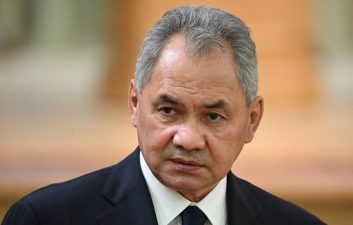Disunity is a global fact about the Muslim Ummah, which no one can sincerely dispute.
It is obvious that there is an artificial crack on the wall of Islam which the Muslims who had caused the crack cannot easily ceil up now.
That crack is fringe ideology imbibed by certain materialists in the guise of Islam. As the anchor Messenger of Allah, Prophet Muhammad (SAW), who brought Islam into the world, never preached any fringe ideology as a component of Islam. But after his demise, the first generation of Muslims introduced different contradictory fringe ideologies as strategies for victory in their struggle for power.
In response to a question posted to this column, by some readers, sometime ago, about Muslim disunity, especially in contemporary time, yours sincerely decided to explain here, how disunity crept into the ranks of the Muslim Ummah.
Today, nothing bothers an average genuine Muslim, anywhere in the world, as much as disunity. This seemingly implacable spiritual virus is responsible for many problems confronting the Muslim Ummah globally today, despite Allah’s assurance of the preservation of Islam.
Whereas, unity is a paramount factor in Islam which the Almighty Allah called His own rope and advised all Muslims to jointly hold together, for the purpose of unity, the misfortune which, some primordial Muslims’ brought into Islam in deviance to Allah’s advice is the cause of today’s global spiritual restiveness which provides the antagonists of Islam with the opportunity to ride roughshod over the entire Muslims.
To most Muslims in the world today, the rope of fringe ideology which they have imbibed, takes priority over Islam as the legacy of Prophet Muhammad (SAW). That is why the mutual antagonism between the so-called Sunni and Shiite ideologies, as well as those between Izalah and Tariqah sects, in Nigeria, seems to be permanently irresolvable.
Although the disunity among the adherents of some other religions, especially Christianity, is much deeper than the one among the Muslims, the adherents of those other religions are able to manage their differences in such a way that the impact of the division among them is not as manifestly pronounced as the one among the Muslims. Thus, the disunity among other religionists cannot be used as a justification for the one among Muslims.
Effect of Disunity
Today, nothing shows the effect and consequences of disunity among the Muslims as much as the Middle East crises. Those crises have virtually become a finger of destiny which the West is constantly and maliciously pointing towards all directions of Islam, with the intent of obliterating the traits of that divine religion from the surface of the earth. And, the nomenclature given to that finger of destiny, as a mark of blackmail, is terrorism. This is because the Muslims of that region have incorporated their different political ideologies into their different religious orientations.
In theory and practice, the Middle East crises are now a master stroke by which means the West is dealing, directly or indirectly, with any nation that claims to have Islamic trait. And, that trait has perennially become an inherent symbol of power struggle. Yet, it is to the Middle East that the rest of the Muslim world is looking for leadership.
Genesis of the Middle East Crises
How did the Middle East crises begin? At what stage are those crises now and how are they adversely affecting Islam?
The answers to the above questions are what prompted yours sincerely to write this article as a reference point on the antecedent of disunity among the Muslims.
Features of the Middle East
It is difficult to understand the ‘Middle East’ crises without understanding the features of that sub-region historically, geographically, politically and economically. Incidentally, no full details of those crises can be discussed on a single page of a tabloid daily. Thus, whatever is discussed here can only be a brief summary of a fringe in those crises.
Reminiscence
What is called ‘Middle East’ today was known, in the primordial time, as Anatolia. Situated between the Black Sea and the Mediterranean Sea, this Western part of Asia was once the world’s greatest axis of power before the emergence of Islam. It was in that axis that Empires like Mesopotamia, Assyria, Phoenicia, and Persia, held sway, at one time or another, before they started falling one by one through the millennia. With time, the baton of control shifted further to the West and such Empires as Greek and Roman rose and fell only to pave way for what can be called ‘Islamic Empire’ in the 7th century CE.
It was only centuries into the statehood of Islam that the name of the sub-region was changed from Anatolia to Asia Minor. This was to delineate between Asia proper and its peripheral link to the West.
However, to suit the economic ambition of the Western powers, the name was changed again, to ‘Middle East’, after oil was discovered in that area in the 19th century. The main objective of re-naming that area ‘Middle East’, by the Europeans, at that time, according to some historians, was to severe it, if psychologically, from the continent called Asia, as a way of precluding Asia from competing with the West for the wealth of that peninsular in future.
Analysis
The name ‘Middle East’ is, therefore, a political nomenclature coined by the West and imposed on the area, to enable the region serve two fundamental purposes. One purpose was for it to serve as the hub of the energy to be used in propelling the emerging Western industrialization. The other was to use the area as a fortress against any cultural incursion of the East into the West.
The West was able to realize these two objectives due to irreconcilable differences between the Arabs and the Persians on the one hand, despite the cord of Islam that binds them together, and to initiate a permanent dissension among the Arabs themselves generally, on the other hand. Britain was, of course, in the forefront of that schism. And, politically speaking, it is in the interest of the West that the two blocks (Sunni and Shiite) do not see eye to eye. If the two blocs (Sunni and Shi’ah) had been allowed to unite on the platform of Islam, the power equation of the world, as currently constituted, would have tremendously been to the benefit of Islam and the Muslims. And, that would have propelled Islam beyond the imagination of the entire world powers.
Explanation
Today, the ‘Middle East’ consists of two main blocs: the Arabs and the Persians. The former includes the North African countries. The latter includes the South East of the now defunct Soviet Union. It must be remembered that the great Islamic scholar and narrator of Hadith, Abu Abdullah Ibn Isma’il Al-Bukhari, simply known as Imam Al-Bukhari, was a Persian from a country called Uzbekistan today. His home town in that country was Bukhara, which was why he adopted Al-Bukhari as part of his name. Uzbekistan shares border with Iran.
The differences between the Arabs and the Persians became irreconcilable because of the two racial-based political ideologies which engendered power struggle between them. One of those ideologies is Sunni. The other is Shi’ah. But the real truth is that both blocs only came under the cover of Islam for undisclosed agenda which is power acquisition.
When the seat of the Islamic Caliphate shifted to Turkey in 1453 CE, it was thought that the ranks of the Muslim Ummah would be closed if only to further the course of Islam. But that did not happen.
And for almost 500 years that the Ottoman Empire lasted, the concentration was rather on power grabbing than a focus on strengthening Islam.
After the final fall of the Islamic Caliphate in Turkey in 1924, what the remnants of the Turkish Empire did was to recline into its pre-Islamic status by replacing Islamism with racial or tribal nationalism. At least, Mustapha Kamal Ataturk who initiated the final collapse of the Islamic Caliphate ensured the sustenance of that collapse.
The only unifying factor that remained intact among the Turkish people, after the death of Ataturk was language. The fact that some ancient races like the Mesopotamians, the Assyrians, the Phoenicians and the Barbarians of North Africa had lost their languages to Arabic, several centuries back, made it impossible for those races to break relationship completely with the real Arabs of the Gulf region. But each race under the old imperial nomenclature preferred to remain as the head of a dog rather than the tail of a lion. That was the ambitious concept that lured the late President Saddam Hussein of Iraq to the inordinate ambition of expansionism which eventually drove him to the gallows in 2006.
More will soon be written in this column about disunity among Muslims especially the intra-Arab disunity. Please, watch out for it.
RAMADAN KARIM!
First published in The Nation of Friday April 22, 2022.




